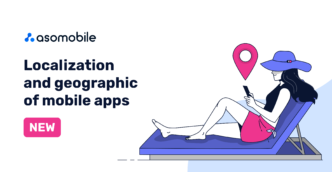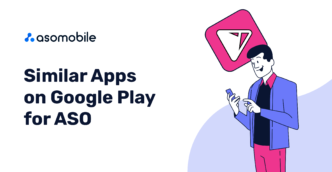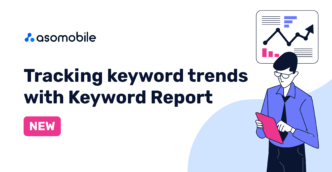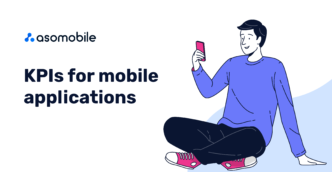ASO trends for fitness app niche in 2023
What was unique about 2023 for ASO in the niche of fitness and health apps? The growing popularity of sports and a healthy lifestyle among users remains an indicator of this category, albeit with minor adjustments. After the pandemic, sports went beyond the apartment, and gyms and sports grounds became available again. But life cannot be turned back, and users, having tried personal fitness from mobile applications, are less willing and interested in getting a membership. Plus, the developers themselves have caught the wind of change and now offer the possibility of training according to an individual program, considering the capabilities of fitness centers. It's like personal training, only more convenient, economical, and practical, but only for some. Many users happily took the opportunity to return to the reality of the fitness industry and threw their home workout mats into a dusty corner. What awaits us in the fitness app niche, and how will it affect our optimization and promotion strategy?
Niche of fitness and health apps on the App Store 2023
There are more than 24 thousand applications in the Fitness and Health niche based on iOS in the United States, with 15.3 million monthly downloads. As seen from the analytics, this category is not at the top of all others in downloads. However, the monthly revenue indicators make it very attractive for developers. Half of the Top 10 apps in the category are fitness apps.
Niche of fitness and health apps on Google Play 2023
The number of Android-based apps in the United States is more than 35 thousand, with about 8 million installations. This category of applications ranks slightly lower than all others, both in terms of downloads and revenue, compared to the App Store. However, the level of earnings is expected to be lower, which is a feature of user behavior.
ASO Features of fitness applications
We recently found out that the peak of installations of fitness apps occurs on Monday - which is quite logical, isn’t it? On average, health and fitness app installs are 16% higher on Monday than on Saturday (according to an Adjust report). But Wednesday is a day of increased training intensity, showing increased interaction with the application. If we decide to go in for sports on Monday, then on Monday, we will search and install, and by Wednesday, we will gather our thoughts and take advantage of the chance for a sports future.
Fitness apps have some differences from other categories that should be taken into account when developing an optimization and advertising strategy:
- Target users.
These apps have a broad and diverse target audience, according to hobbies - from professional athletes to those who dream of losing weight by age - from youth to sports for older people.
This is also good - a wide range of potential users can become a wide range of our users. It may carry specific problems - it is difficult to target an audience with different interests, habitats (which promotion channels to use), and purposes for using the application.
- A very diverse form of monetization.
We can offer subscriptions, freemium plans, and access to in-app events, such as fitness marathons, competitions, or titles of the fastest and strongest among users. We may encourage users to exercise by giving extra points within the app for diligent and consistent practice. Launching some special events on Wednesday, as we have already found out, increases the chance of their success. This leads to the next point of the promotion strategy.
- Channels of interaction with users.
Omnichannel marketing is effective here, as in other niches. Promote through influencer marketing, social media, and even Spotify. Have you noticed the presence of selections of tracks from fitness apps? In addition, there is the ability to run video and audio advertising.
As for opinion leaders, it is now difficult not to meet a blogger who does not say that he uses the Asana Rebel fitness application for strength training or yoga.
Everything is very diverse, complicating unification approaches but providing development opportunities. Look at the Health and Fitness category in both stores. It will be an extensive niche that includes not only fitness and training apps but also planners, apps for mental health, healthy habits, trackers and reminders, and many more.
Features of visual elements of fitness applications
Icons for sports apps have a completely recognizable and laconic design. The main directions in design can be identified:
- people who play sports and demonstrate excellent physical shape

- a brand icon that is aimed at people who have a particular loyalty to the app (as with search engine optimization, they look for a brand - they establish a brand)

- schematic icons with sports equipment or an image of the primary function of the application

The color solutions are very diverse. This is the niche where it is problematic to single out a specific color scheme. Bright and contrasting solutions coexist here with pastel colors and simple lines. But even in our more or less random icons, which we depicted above, you can see that many applications use the color blue and its shades (although this is the favorite color of the author of the article). Of the range of apps we looked at, only the first example used red, which is known to get a strong response from users but isn't exactly a favorite of the fitness niche. We think this is due to several reasons - many applications offer yoga and stretching, but here, the red color will be like a bull in a china shop, and the contents of the application already excite the user - you will have to sweat, snore and nothing else, under intense loads.
Remember other elements of the visual design of the app page. Screenshots, previews, and promotional videos are essential for this niche. The variety of apps makes choosing workout options and activity types more difficult for the untrained user. Of course, if you are an experienced athlete who does interval training, you know exactly what kind of timer you need to set for your workout. However, an uninitiated person can be stunned by the variety of apps. And here screenshots and videos ефлу effect, because here, more than anywhere else, we must understand precisely what interaction opportunities this or that application will provide.
Text optimization in the fitness app niche
Regarding approaches to text metadata optimization, a rare example would be an application that does not have a brand name. A unique feature of the niche is that the brand keywords here are specific and consist of relevant search queries. For example:
- HealthFit / Your Workout Companion
- Tempo: Advanced Running Stats / For Runners. By a Runner.
- RunGap - Workout Data Manager / 30 fitness services in one app
- Athlytic: AI Fitness Coach / HRV Based Training & Recovery
Here, we see a great combination of brand names and a clear communication of what the application is focused on.
Recommendations for text optimization remain unchanged - relevant keywords, combinations of the brand name of the application with an explanation of the functionality, and do not ignore the subtitle and subtitle.
2023 and how to promote fitness apps today
The main directions in promoting fitness applications are to use all the strategies that exist in other niches, taking into account the following features:
- Seasonality. In fitness apps and apps for a healthy lifestyle, we will focus not so much on stylizing our icons in autumn leaves or placing cherry blossoms in spring but on the psychology of users. We love to start a new, healthy life - on Monday, a new month, and especially in January (having made a preliminary promise to ourselves into the new year with new habits). Plus, gadgets related to a healthy lifestyle often act as gifts, which leads to installing new apps for monitoring habits.
- Focus on user interaction - push notifications, events, and newsletters. Don’t let our users forget about us; motivate and remind us. If we interact with the user on time, we will benefit him (by supporting him in his training progress) and ourselves.
- Find yourself in the diverse world of apps for a healthy lifestyle. This point is more about those still thinking about or looking for opportunities in the world of mobile development. And there are plenty to choose from - apps for training, diet and nutrition, yoga and meditation (mental health), activity and habit monitoring, calories, and trackers. Such diversity can be confusing because everything has already been invented, and the competition is severe. But your approach may be different; your application may combine several essential functions and will find its user.
- Text and visual optimization. We have already mentioned why this is important. The specificity of the semantics will be an equal share of branded search queries and functional keywords (those that talk about the application itself) - this is great because, in niches where branded traffic predominates, it is challenging to implement a completely new idea.
6. Market research can give you insight and inspiration. Remember that in ASOMobile analytics, you can use the Market section - to look at the Top competitors, evaluate their downloads and income, and track niche trends.
User behavior trends tell us that a healthy lifestyle and the importance of mental health will be, if not market leaders, its driving force. Health fashion has become a part of everyday life, which is lovely. Now, we must figure out how to help users embrace our app and help them become healthier and happier.
 Українська
Українська  Русский
Русский  Español
Español 






